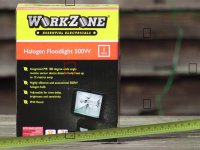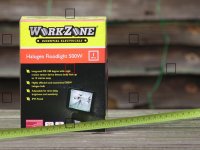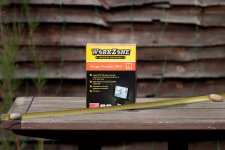Angled ruler tests are not reliable. The focus sensors are a lot larger than the focus squares in the viewfinder and you have no way of knowing which part of the sensor focused on which part of the ruler.
You need a focus target that is parallel with the sensor. By all means use an angled ruler as a scale to judge whether focus is correct, behind or in front of the target. The
LensAlign tool is, in my opinion, vastly overpriced but it does present a foolproof test target.
If you can rig up something equivalent to that then you should be able to perform a reliable test. Here's a nice easy example, attached. I only set this up really quickly and it looks like I have some front focus here (the 40cm mark should be sharpest and I think I'm just a fraction forward of that), so I might need to get busy with some more thorough testing and possibly an adjustment, but hopefully you can see the principle. I focused on the game case, which is clearly parallel to the sensor, not angled at all (or not significantly at least) and the ruler provided a perfect scale from which to judge whereabouts the focus is actually ending up.
Note that the test should be done with the lens wide open and, for a zoom, at the long end of the focal length range. Ideally, for a general purpose test/calibration it is recommended that you set the focus target at a distance at least 50X greater than the focal length. e.g. for a 400mm focal length the focus target should be at least 20m away. If you routinely shoot at some other distance then by all means test and optimise your focus for your preferred distance. My example is a bit of a cheat because I used an 85mm lens but at only ~2m instead of 50X85mm = 4.25m. You should also test in good light - it is not helpful if the AF is struggling. Your test is to make sure that distances are set correctly, not whether the AF can work in miserable conditions.
What you should also note about my example setup is that the game case - my focus target - is huge, relative to the focus square and there can be no possibility of the AF picking the wrong thing. The target also has good contrast, thus allowing the AF perform with confidence, not hesitation.
It is also recommended that you focus, defocus and refocus at least three times in order to establish a reliable pattern and remove random quirks from the test results.
More info from Chuck Westfall on this page -
http://www.digitaljournalist.org/issue0812/tech-tips.html.







